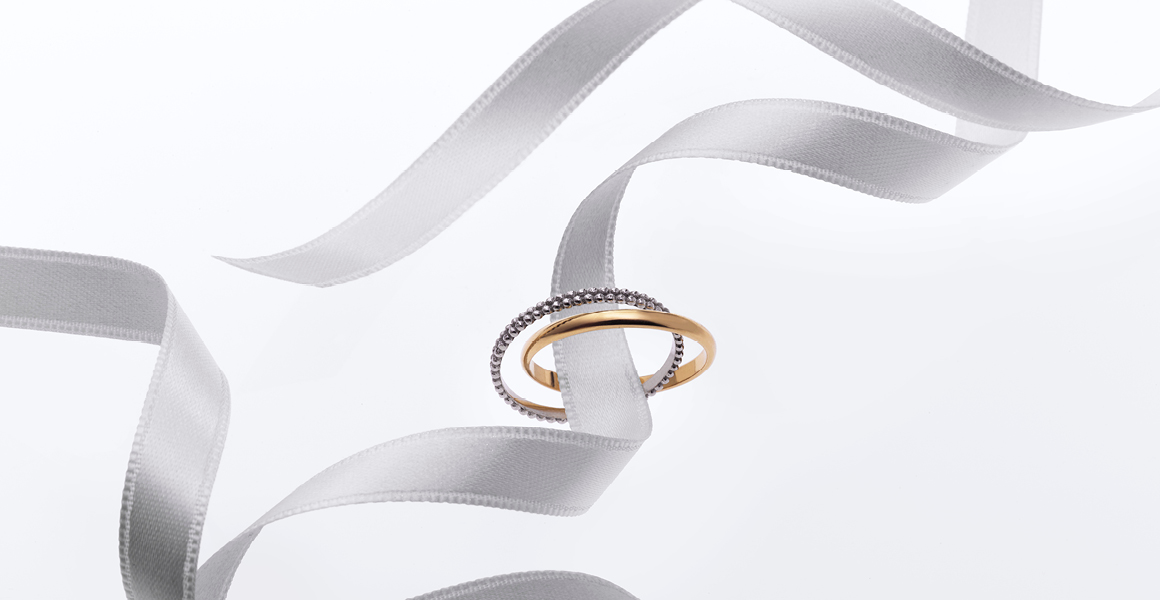gold
Where does gold come from?
Gold is found in large quantities in the Earth's core. As such, it can't be made. Recent studies have shown that it was not formed on Earth; instead, it is believed to originate either from the explosion of a supernova or two neutron stars, some 4 billion years ago.
It is thought that this precious metal came to be lodged in the Earth’s core because of its high density, which is 20 times that of water. Over time, the Earth’s geothermal activity caused gold to rise to minable depths.
Gold is a rare metal which explains its high price.
What about carats?
To better understand the possible differences in colour, it's important to understand what is meant by caratage.
Represented by the letters "ct", a carat is a unit which is used to measure the purity of gold in jewellery.
24 carat (24ct) gold is a warm, natural colour. It's made from pure gold (99.99%). However, it's too malleable to be used for jewellery.
18-carat (18ct) gold is made from 75% pure gold, mixed with 25% other metals such as copper and silver, etc. It has a slightly less bright yellow colour. It is the most common gold purity in the world and the most commonly used in jewellery. 18-carat jewellery can be recognised with a 750 or 0.75 marking which indicates that the jewellery contains 75% gold.
14-carat (14ct) gold, made of 58.5% pure gold, and 9-carat gold (9ct), made of 37.5% pure gold, tend to be slightly harder than 18-carat gold. However, they will not be as strong and will therefore be less resistant to repeated impact and pressure.The significant amounts of other metals in the 9-carat alloy will cause it to oxidise more easily and to lose its shine more quickly. It will also be more sensitive to chemicals, perspiration and water.
9-carat jewellery will not last as long as 18-carat gold which remains the most commonly used gold for jewellery.
How can the colour of gold be changed?
Jewellery can be created in colours other than yellow gold.
Just like most other jewellers, Leysen's most commonly used colours are yellow gold, rose gold, white gold and platinum.
These different colours can be created by adding other metals such as zinc, copper, silver, etc. These metals will have an effect on the gold's colour and will make it harder and more long-lasting. This process is called alloying.
Rose gold is made by adding or increasing the copper content of the gold's alloy composition.
White gold is made by adding palladium. This alloy requires more preparation and maintenance and is generally more expensive.
To prevent any yellow tones, a rhodium film is added to the gold to create a "whiter" shade. This process often has to be repeated in jewellery shops because it's a "surface treatment" which wears off over time.
Yellow gold, white gold, rose gold? Today, it's particularly on-trend to mix and match colours!
The most important thing is to choose something you love and which suits your personality!

